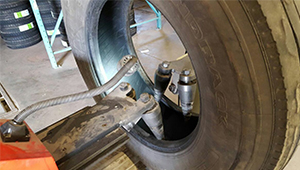
Initial Inspection
On the first step of retreading process we attentively check the tire and define whether it meets with our stringent quality specifications.
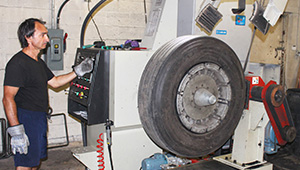
Buffing
The buffing process removes all needless rubber from the tread to the exact specified dimensions with the help of high-speed revolving rasps and brushes. Using computer-controlled machinery, the operator is able to achieve the exact dimensions required so that the buffed casing is the exact profile for its intended matrix.
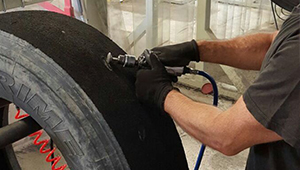
Preparation
Firstly the buffed casing undergoes a further visual inspection with an experienced eye. Any visible cuts or exposed cords are “buzzed” out by hand to establish the degree of damage not visible during the initial casing inspection. Larger holes in the casing are filled with compound and patched to rebuild the casing’s integral strength. The final prepared casing is brushed up and sprayed with a water-based latex adhesive and any variances made during the hand finishing stage are filled with a special compound ready for the Building process.
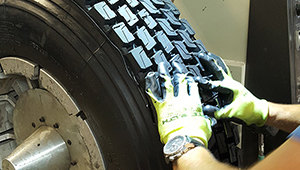
Building
New tread is applied to the casing using a computer-controlled process. While the tire revolves on an inflatable chuck it is wrapped with a strip of premium rubber.
To be absolutely sure that the right amount of rubber is applied, all process is controlled by professional stuff.
They should form the exact profile and volume of the matrix’s specific tread pattern. We should be sure that the tire is perfectly balanced for service.
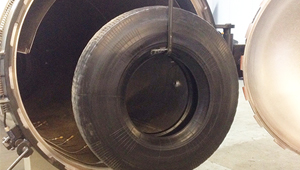
Curing
In a curing process tires are put into a hot, segmented radial matrix. The tyre is heated for up to 95 minutes at 155°C, whilst inflated to a maximum of 300psi, with the use of an internal bladder placed within the casing. The tyre is heated for up to 95 minutes at 155°C, whilst inflated to a maximum of 300 psi, with the use of an internal bladder placed within the casing.
Special machine combines the heat, time and pressure. It makes us sure that in a result the tire will be with the same tread pattern and depth as the matrix specification for which it was intended. The same process is used in production of new tires.
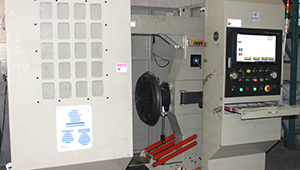
Final inspection
When the tires are deflated, removed, cooled and trimmed, they are ready for the Final Inspection process. This process involves 2 inspection stations:
The first is a visual and tactile inspection, where a trained eye will spot any imperfections within the tread pattern or sidewall.
The second examination sees the tire go through an inflation test, where it is rapidly inflated to 150psi and hold 2 minutes. During inflation process tire takes pressure rolling for detection of any structural imperfections or weaknesses.
